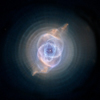

Here are some examples of UFO reports made by astronomers prior to manmade aircraft:
June 17th, 1777: Charles Messier, famous for his nebula catalogue observed a large number of dark spots in the skies, disc shaped, which were unknown to him. In his log book he wrote - 'They were large and swift and they were ships, yet like bells.'
August 18th, 1783: Tiberius Cavallo, Italian chemist, inventor and writer on natural philosophy - a fellow of the Royal Society, saw at Windsor Castle what he termed a 'most extraordinary meteor...North-east of the Terrace, in clear sky and warm weather, I saw appear suddenly an oblong cloud nearly parallel to the horizon. Below the cloud was seen a luminous body... It soon became a roundish body, brightly lit up and almost stationary. It was about 9.25 p.m. This strange ball at first appeared bluish and faint, but its light increased, and it soon began to move. At first, it ascended above the horizon, obliquely towards the east. Then it changed its direction and moved parallel to the horizon. It vanished in the SE. I saw it for half a minute, and the light it gave out was prodigious. It lit up every object on the face of the country. It changed shape to oblong, acquired a tail, and seemed to split up into two bodies of small size. About two minutes later came a rumble like an explosion.'
August 1st, 1871: A French astronomer, E.A.Coggia, known for cometary discoveries, saw, in Marseilles, an object slowly moving across the sky, he was unable to explain. According to his description, it appeared at 10:43 pm, and was a magnificent red object moving slowly eastward. At 10:52:30 pm it stopped, and then moved northward, until stopping again after a further seven minutes. Its next movement was once again towards the east, finally disappearing, or falling behind the horizon at 11:03:20 pm.
April 24th, 1874: Prof. Schaffarik of Prague Observatory saw an unidentified object crossing the moon. He reported that it was '..of such a strange nature that I do not know what to make of it. It was bright white and moved slowly across the face of the moon. I saw it even after it had left the disc of the moon. In other words, the object was no part of the moon because it left the moon behind and wandered out into space. What else can it be other than a flying machine?'
July 31st, 1896: At Smith Observatory, U.S.A., astronomers noticed a dark circular disc-shaped object going across the moon's surface very quickly, timed at about four seconds, which should prove its closeness to Earth. / Coming back to the moon and various observations of lights, etc., in England in the Seventies or so of the 19th century, an astronomer, Birt, deposited at the Royal Astronomical Society over 1500 observations of lights, moving objects and changes of brightness, mostly in the crater Plato, which is, with its about 60 miles diameter quite a prominent feature of the moon.